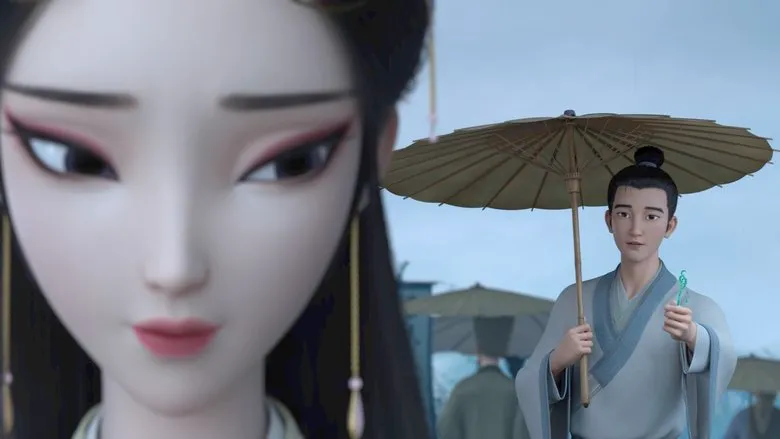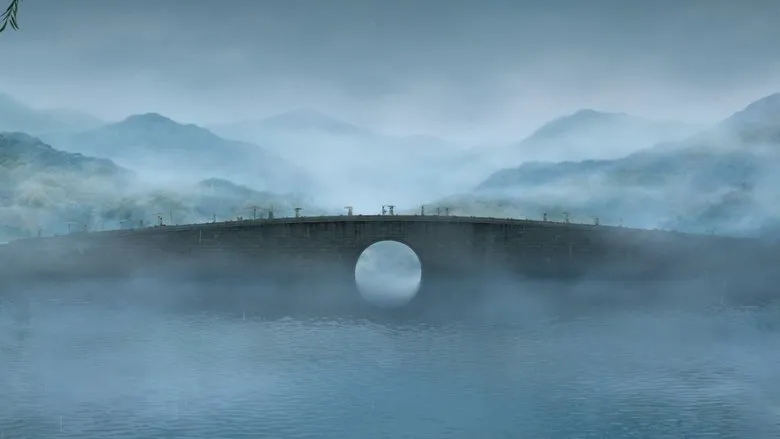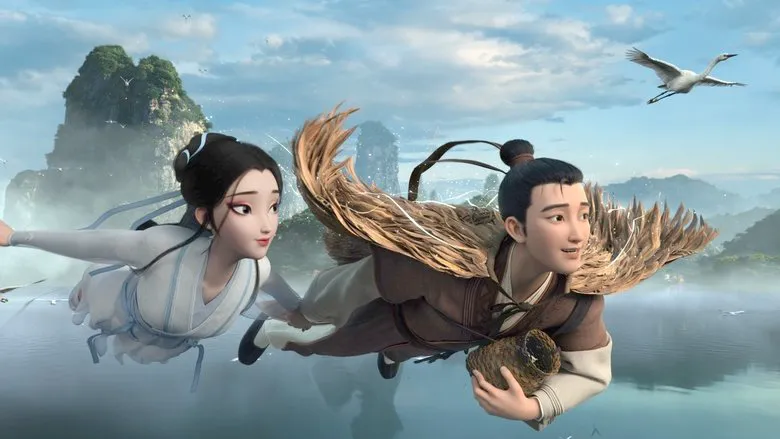The Dilemma of Adapting Traditional Tales: A Look at “White Snake: Floating Life”
The animated film scene has recently been graced (or perhaps challenged) by “White Snake: Floating Life,” the latest installment in Light Chaser Animation’s “New White Snake” trilogy. While some viewers celebrate its adherence to the classic White Snake legend, a significant portion find it “predictable,” “clichéd,” and even “bland.” Some critics have even gone as far as labeling Bai Suzhen with modern internet slang as a “love-obsessed” character, showcasing the difficulty in appealing to a modern audience with traditional stories.
The 1992 television series “The Legend of the White Snake” undeniably shaped the collective memory of the White Snake narrative for an entire generation. The enchanting love story between Xu Xian and Bai Niangzi resonated deeply. For this audience, the return to this classic tale on the big screen can certainly inspire feelings of nostalgia.
However, the mixed reception, particularly the criticisms of Bai Suzhen’s supposed “love-obsessed” character and the film’s adherence to the “traditional story,” showcases the inherent challenges of adapting age-old narratives for a contemporary audience accustomed to new perspectives. The question then becomes: how much innovation is too much innovation when reimagining a classic?
Innovation in Previous Installments: A Balancing Act
The first two films in the “New White Snake” trilogy boldly ventured into uncharted territory. “White Snake: Origin” took the less-explored “Snake Catchers” tale as inspiration, crafting a narrative around Bai Snake and Xu Xian’s initial encounter before ever reaching the Song Dynasty timeline. Introducing a snakre organization further complicated the story, which was led by a captivating female snake queen.
In this iteration, Bai Snake and Xu Xian’s love was not just threatened by the “different paths of humans and demons,” but was also further complicated by the generational feud between humans and snakes. Perhaps the most pivotal change was Xu Xian’s transformation into a demon to defy the natural order and to stay with Bai Snake.
“White Snake 2: Green Snake” dramatically diverged further from the source material, presenting a completely original narrative with a modern setting, stunning visual design, and thrilling action sequences that were positively received.
These previous films demonstrated the creators’ clear ambition to challenge and expand upon the boundaries of adapting classic literature.
“White Snake: Floating Life” - A Return to Familiar Territory
In contrast, “White Snake: Floating Life” offers a remarkably minimal changes to both visual and narrative conventions.
The story focuses almost soley on a “pure love” narrative, following a predictable plot: Bai Suzhen and Xu Xian experience love at first sight but are continuously thwarted by both “different paths of humans and demons” and Fahai. Fahai, staying true to the original story, remains the staunch defender of this natural order who becomes obviously intolerant of any love that does not fit within these rigid defintions. Even the added scene that provides comedic relief by having Fahai going on a blind date with Xiaoqing to gather information does very little to alter his original, staunch character.
This narrative core returns to examining the themes of clashes between traditional morality and individual will, which serves as a cornerstone within “The Legend of the White Snake.” However, the decision to return to themes found in earlier iterations, with little to no addition of new commentary, the film lacks a message and struggles to resonate with new audiences. Because new perspective or contemporary spirit is absent, the film functions as a shallow nostalgic trip.
The Ever-Evolving Nature of the White Snake Legend
It’s essential to recognize that “The Legend of the White Snake” is a story that has transformed throughout the decades. The oldest form of the snake spirit is found in the Tang Dynasty story “Li Huang” from “Bo Yi Zhi,” which contains a ruthless and man-eating demon as opposed to the virtuous Bai Suzhen we are familiar with. It was not until Feng Menglong’s “Stories to Caution the World” during the Ming Dynasty when the “White Snake Legend” developed into its current state.
The Imperative of Contemporary Resonance: Beyond Nostalgia
Contemporary animated films excel in finding new ways to relate to and change classic themes. “Ne Zha” reimagined this character’s relationship with Ao Bing while emphasizing the theme of the importance of independence.
“New Gods: Yang Jian” brought an entirely new story to the screens.
“Inside Out 2” highlights universal anxieties experienced individuals as they move through life. Even Marvel is exploring the concept of heroes, or rather, “anti-heroes,” and how characters can be flawed and still be relatable. With adaptations prioritizing contemporary values, this leaves the crucial question of what “White Snake: Floating Life” brings to the classic tale.